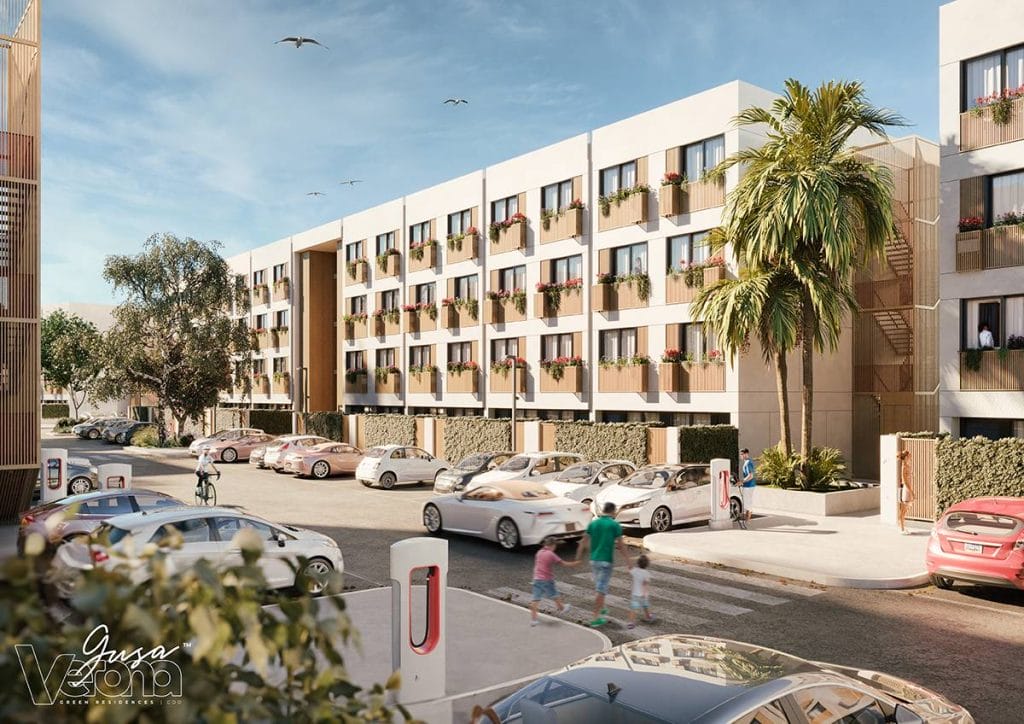I have been such a longtime advocate of environmental sustainability that it became my guiding principle when I pursued a career in architecture and property development which eventually led me to the Philippines almost 15 years ago.
The same advocacy would be adopted by Italpinas Development Corp. (IDC), the company that I founded in 2009, together with my Filipino business partner and friend, Atty. Jojo Leviste, with the prospect of developing eco-friendly mixed-use buildings in the Philippines.
In the execution of our projects, we have remained committed to sustainable developments in harmony with the environment to bring value to our investors, end-users, and the communities where we operate.

At the core of Italpinas’ business is “biophilic” design, which incorporates nature into buildings and urban spaces. It aims to enhance the connection between humans and the natural environment, and to provide numerous benefits for health, wellbeing, and sustainability.
That is why Italpinas embraces biophilia as a design philosophy, incorporating it into our various projects for the economic market – something that has not been done, to my knowledge, by any other property developer catering to this segment.


There are several studies that suggest biophilic design can have positive effects on our mental state and wellness. A research paper “Exploring Biophilic Design and Its Implications for Mental Health” by Harshita Jha and Sudarsan Behera concluded that exposure to natural environments and features has positive effects on human health and wellbeing. Incorporating biophilic design can promote faster healing by reducing stress levels, improving mood, and enhancing the body’s natural healing processes.
Indeed, by incorporating natural elements into the built environment, we create spaces that are not only aesthetically pleasing but also one that promotes health, wellness, and sustainability.
The importance of creating homes and communities that are aligned with nature have never been more necessary than today because of what we have experienced in recent years, especially when the world was hit by the COVID-19 health crisis.
Even in the aftermath of the pandemic, mental health cases continue to be a pressing concern globally as the numbers have dramatically increased. This did not spare the Philippines.
In a recent interview, Philippine Mental Health Association (PMHA president Dr. Cornelio Banaag Jr. shared that the organization has noticed a sharp increase in mental health concerns during and after the COVID-19 lockdowns, across all ages.
“Mental health-related issues affect Filipinos of all ages and backgrounds – young or old, rich or poor. It is a silent epidemic that we need to confront head-on,” he said.
Citing data from the Department of Health (DOH), Banaag expressed concern that mental illness is becoming a common disability with at least 3.6 million Filipinos battling mental health issues to date.
As such, I cannot overemphasize the importance of integrating natural ecosystems and elements into the built environment. Not only is it good for Mother Earth but equally important, it benefits humans as well.
Greens make a home healthier. It works on the principle that humans have evolved to work in and with the natural environment for millions of years, and that we are not well-adapted to the urban industrial environment which has only been in existence for the past 200 years or so.
The more we incorporate nature in our living spaces, the better it will be for our wellness. Being with nature is the best passive therapy that we can integrate with our lives. Biophilic design improves physiological and psychological health, which is especially important as most people spend an average of 90 percent of the day indoors.
In addition, biophilia enables us to save energy as it helps control the indoor temperature through shading and humidity control. This allows end-users to reduce the use of energy for cooling in “hot countries” like the Philippines. Plants, for example, can increase humidity indoors via the natural process of transpiration, which releases water vapor into the air and effectively turns them into passive and low-energy humidifiers.
Lastly, being closer to nature can improve productivity. Our minds and bodies function best when we are in close proximity to nature. Staying indoors for extended periods of time with little interaction with nature can lead to increased depression. Biophilic design in the workplace has been shown to increase creativity, reduce absenteeism, and boost patience levels, productivity, and enthusiasm for the space.
According to a research report by Human Spaces, biophilic design can improve productivity by six percent and creativity by up to 15 percent.
As the human population grows and our access to the wilderness becomes limited, it becomes increasingly important to integrate nature into the built environment. At Italpinas, we are committed to doing our part in creating an environment that is conducive to the promotion of one’s overall wellness.
